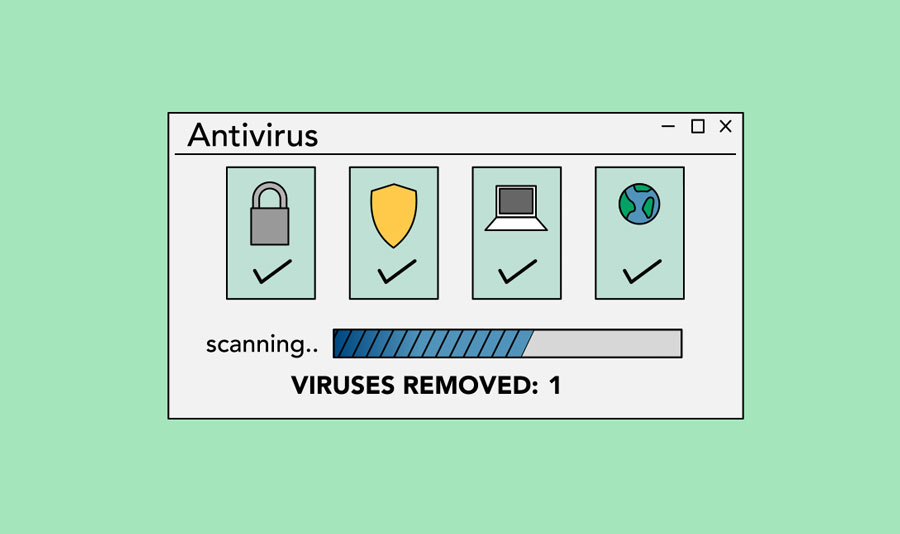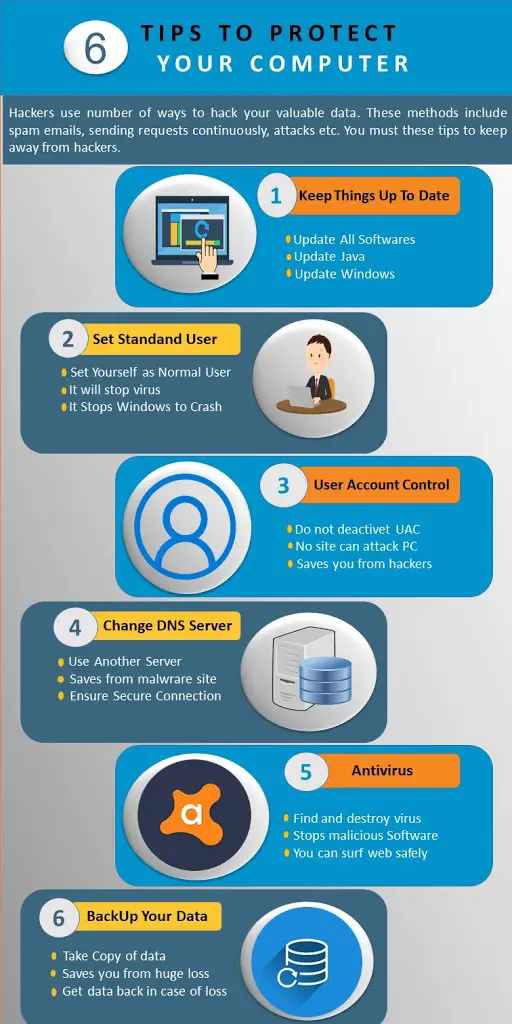
- #WHAT CAN YOU DO TO PROTECT YOUR COMPUTER FROM VIRUSES SOFTWARE#
- #WHAT CAN YOU DO TO PROTECT YOUR COMPUTER FROM VIRUSES CODE#
- #WHAT CAN YOU DO TO PROTECT YOUR COMPUTER FROM VIRUSES MAC#
#WHAT CAN YOU DO TO PROTECT YOUR COMPUTER FROM VIRUSES SOFTWARE#
Fred Cohen's theoretical compression virus was an example of a virus which was not malicious software ( malware), but was putatively benevolent (well-intentioned). In 1987, Fred Cohen published a demonstration that there is no algorithm that can perfectly detect all possible viruses. It was the first paper to explicitly call a self-reproducing program a "virus", a term introduced by Cohen's mentor Leonard Adleman. In 1984 Fred Cohen from the University of Southern California wrote his paper "Computer Viruses – Theory and Experiments". On its 50th use the Elk Cloner virus would be activated, infecting the personal computer and displaying a short poem beginning "Elk Cloner: The program with a personality." Written in 1981 by Richard Skrenta, a ninth grader at Mount Lebanon High School near Pittsburgh, it attached itself to the Apple DOS 3.3 operating system and spread via floppy disk. In 1982, a program called " Elk Cloner" was the first personal computer virus to appear "in the wild"-that is, outside the single computer or computer lab where it was created. The Reaper program was created to delete Creeper. Creeper gained access via the ARPANET and copied itself to the remote system where the message, "I'm the creeper, catch me if you can!" was displayed. Creeper used the ARPANET to infect DEC PDP-10 computers running the TENEX operating system. Creeper was an experimental self-replicating program written by Bob Thomas at BBN Technologies in 1971.


The Creeper virus was first detected on ARPANET, the forerunner of the Internet, in the early 1970s.
#WHAT CAN YOU DO TO PROTECT YOUR COMPUTER FROM VIRUSES MAC#
The MacMag virus 'Universal Peace', as displayed on a Mac in March 1988 In his work Kraus postulated that computer programs can behave in a way similar to biological viruses. In 1980 Jürgen Kraus wrote his diplom thesis "Selbstreproduktion bei Programmen" (Self-reproduction of programs) at the University of Dortmund. The article describes a fully functional virus written in assembler programming language for a SIEMENS 4004/35 computer system. In 1972, Veith Risak directly building on von Neumann's work on self-replication, published his article "Selbstreproduzierende Automaten mit minimaler Informationsübertragung" (Self-reproducing automata with minimal information exchange). Von Neumann's design for a self-reproducing computer program is considered the world's first computer virus, and he is considered to be the theoretical "father" of computer virology. In his essay von Neumann described how a computer program could be designed to reproduce itself. The work of von Neumann was later published as the "Theory of self-reproducing automata". The first academic work on the theory of self-replicating computer programs was done in 1949 by John von Neumann who gave lectures at the University of Illinois about the "Theory and Organization of Complicated Automata". įurther information: Timeline of notable computer viruses and worms and Malware research In response, an industry of antivirus software has cropped up, selling or freely distributing virus protection to users of various operating systems. Ĭomputer viruses cause billions of dollars' worth of economic damage each year. Motives for creating viruses can include seeking profit (e.g., with ransomware), desire to send a political message, personal amusement, to demonstrate that a vulnerability exists in software, for sabotage and denial of service, or simply because they wish to explore cybersecurity issues, artificial life and evolutionary algorithms.

The vast majority of viruses target systems running Microsoft Windows, employing a variety of mechanisms to infect new hosts, and often using complex anti-detection/stealth strategies to evade antivirus software.

Virus writers use social engineering deceptions and exploit detailed knowledge of security vulnerabilities to initially infect systems and to spread the virus. Therefore, it is not restricted by the host program, but can run independently and actively carry out attacks.
#WHAT CAN YOU DO TO PROTECT YOUR COMPUTER FROM VIRUSES CODE#
A computer worm does not need a host program, as it is an independent program or code chunk. When the program runs, the written virus program is executed first, causing infection and damage. The virus writes its own code into the host program. Ĭomputer viruses generally require a host program. If this replication succeeds, the affected areas are then said to be "infected" with a computer virus, a metaphor derived from biological viruses.


 0 kommentar(er)
0 kommentar(er)
